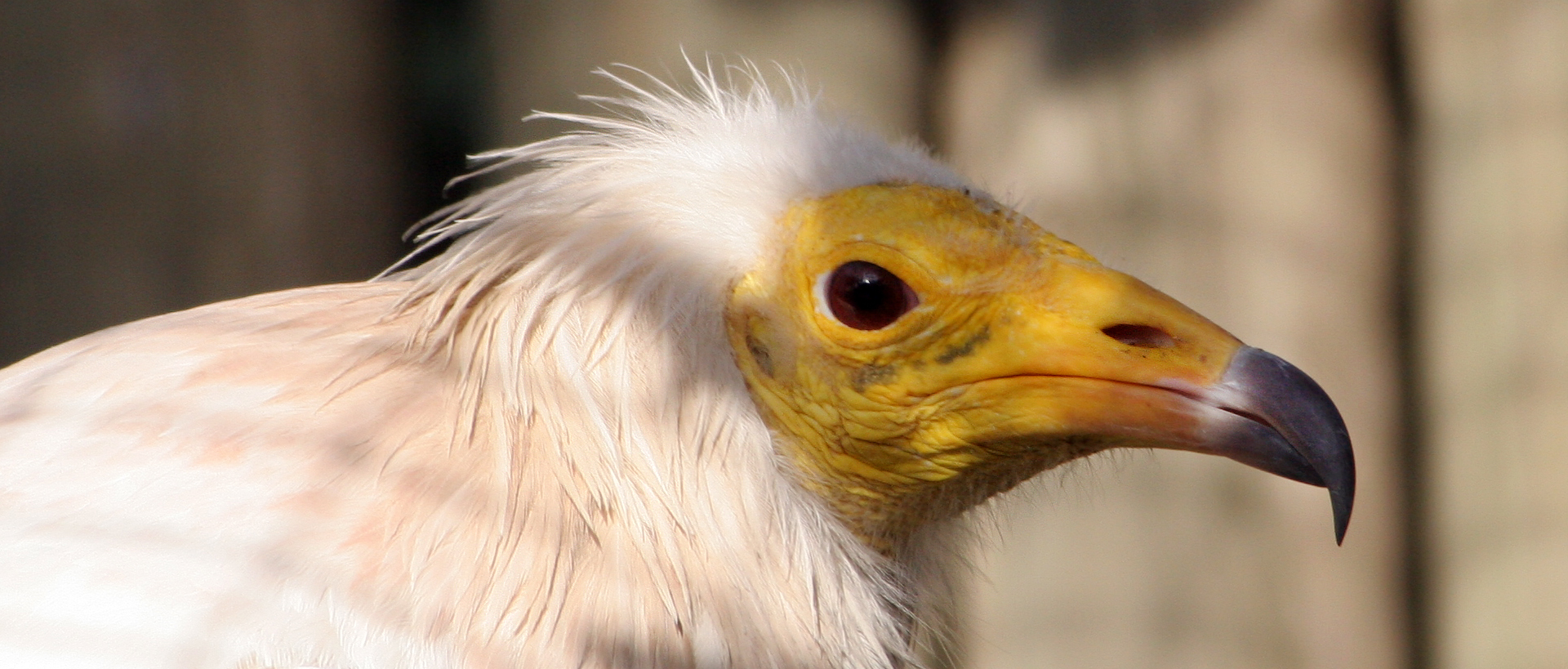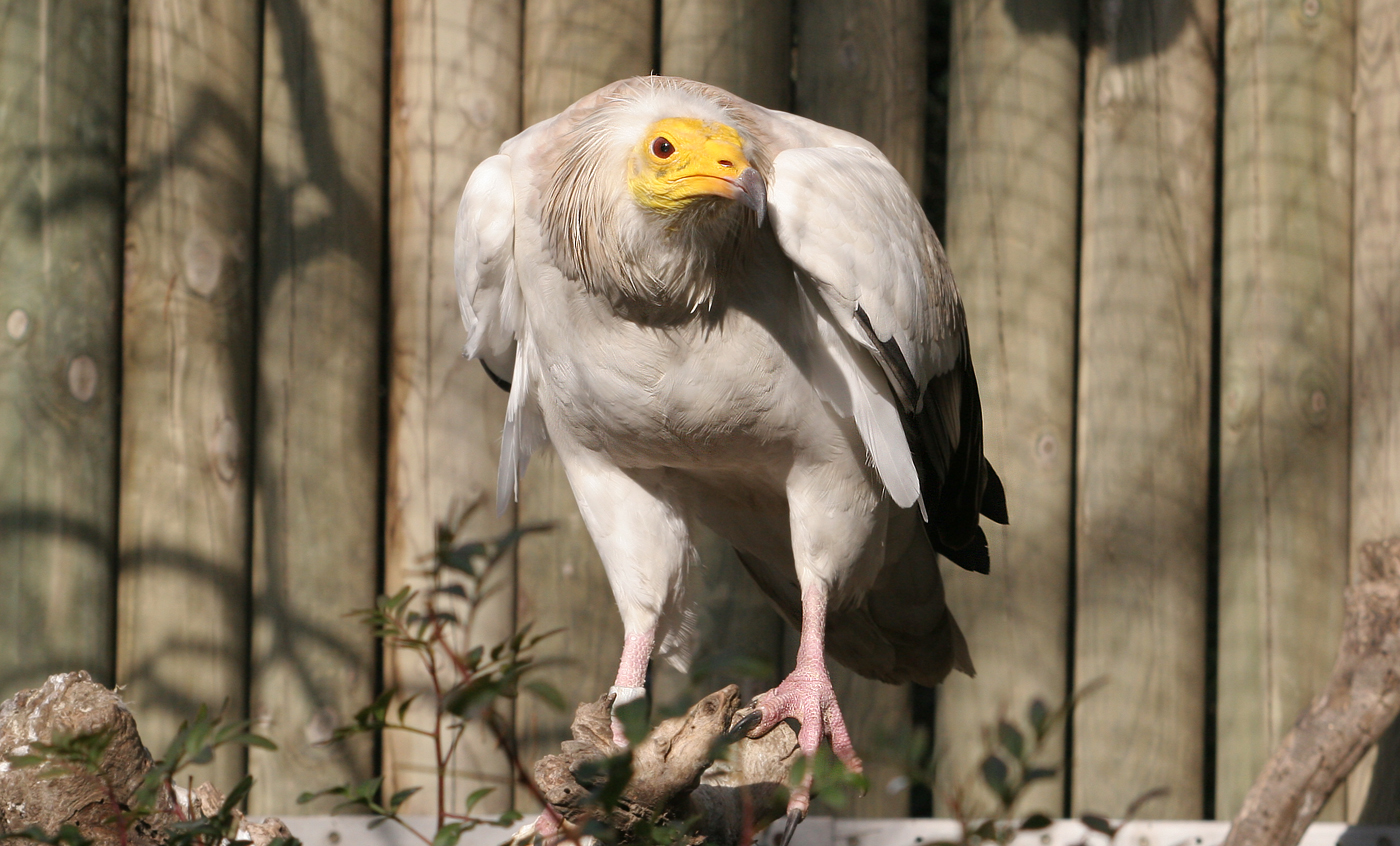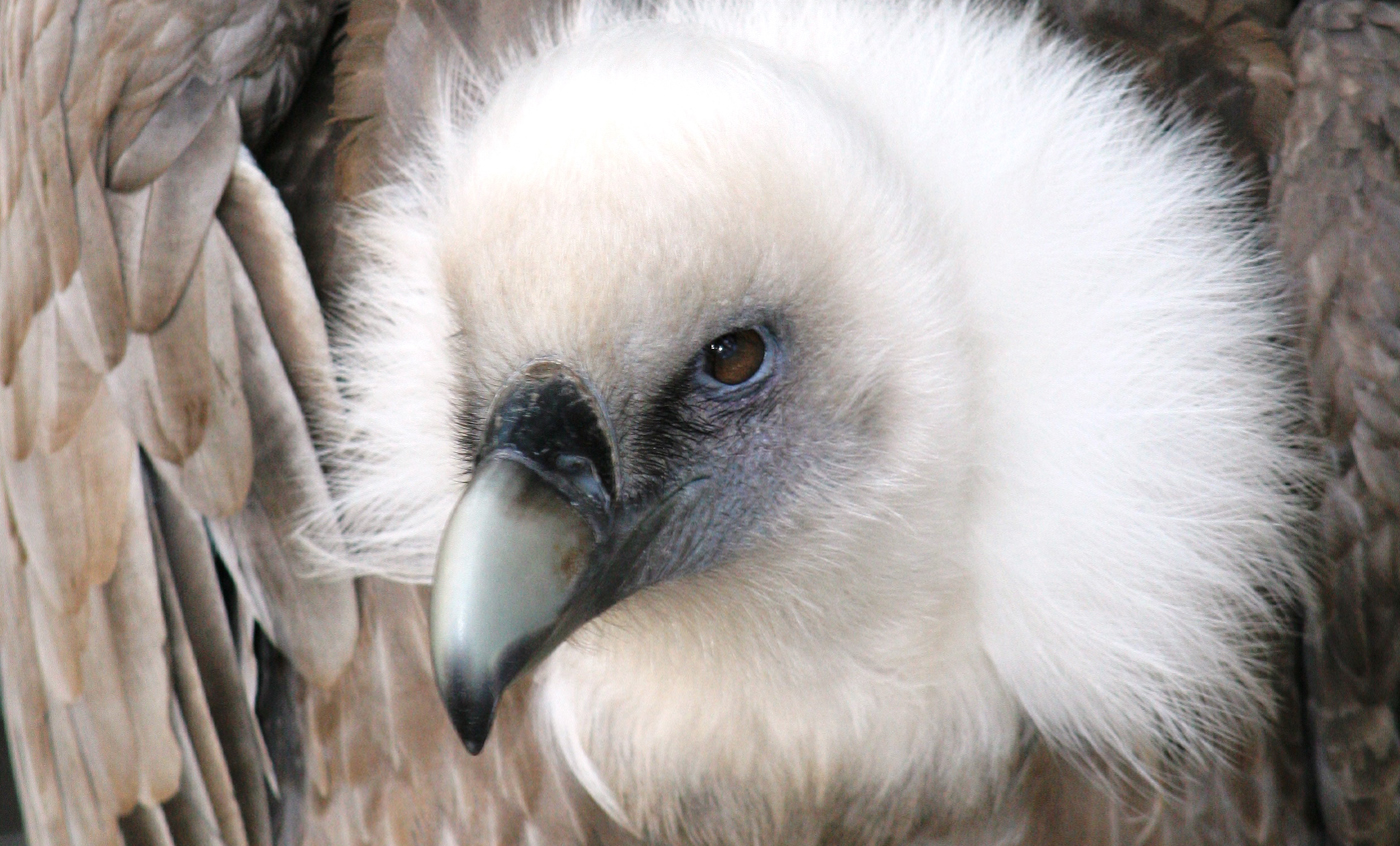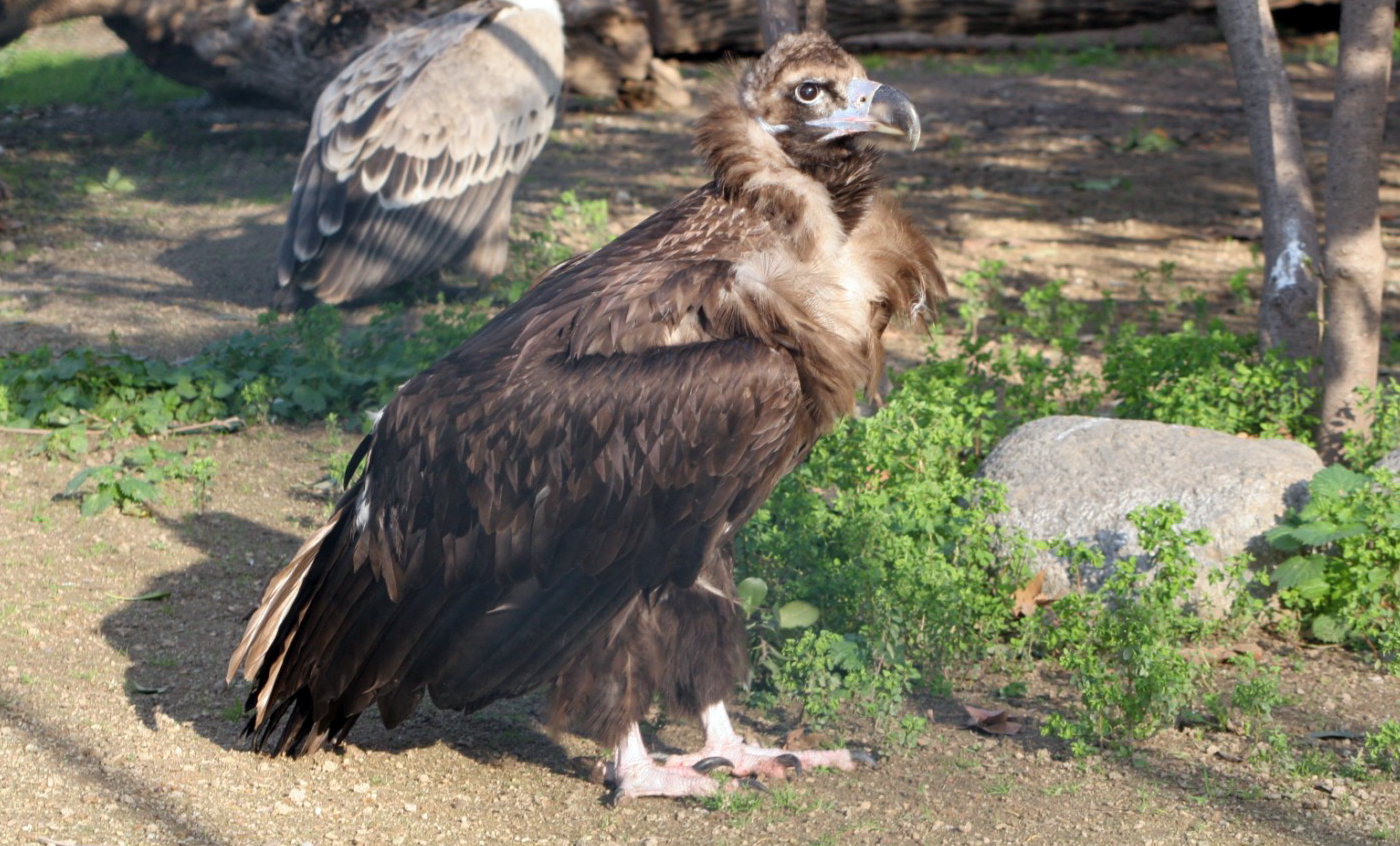Aegyptian vulture
The Egyptian vulture is the smallest European vulture, living on the steppes, semi-arid zones and other open spaces in southern Europe, the Middle East as far as India and in most of Africa. It feeds mainly off carrion and is migratory, coming to Spain each year to breed in nests in cliffs.
It is one of the few species of animals able to use a tool and breaks open ostrich eggs left in the savannahs of Africa by dropping stones from its beak.
Natural habit
Southern Europe, the Middle East to India and much of Africa.
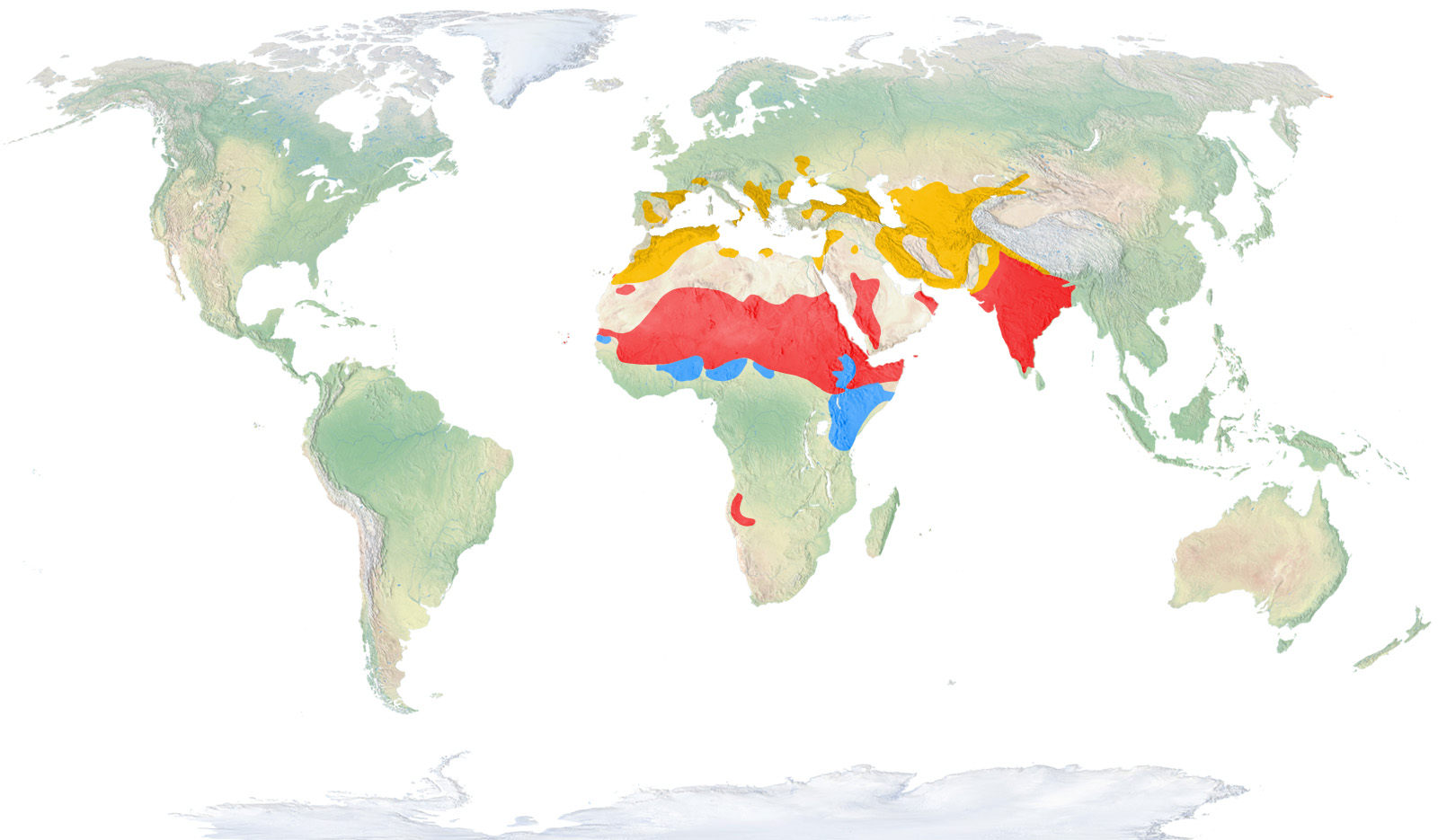
- Distribution / Resident
- Breeding
- Wintering
- Subspecies
Risk level
- Extint
- Extint in the wild
- Critically endangered
- In Danger
- Vulnerable
- Near threatened
- Minor concern
- Insufficient data
- Not evaluated
Taxonomy
Physical characteristics
Biology
Reproduction
Biology
With basically white plumage, the feathers on the tips of the wings are black. The featherless head and neck are yellow and the plume of long thin whitish feathers surrounding the head are typical. During flight, it can be recognised by the two-toned black and white underwing and wedge shape of the tail. The young have a uniform brownish colour with a grey face.
It lives on steppes, semi-deserts and other open sites in southern Europe, the Near East to India and a good part of Africa.
They primarily feed on carrion, although their long narrow beaks, less robust than that of other vulture species, means that they cannot slash the hides of large animals. They have to wait for larger vultures to start the job off in order to access the softer parts that make up their diets. They also feed on the remains of small animals like rabbits, birds, reptiles and fish.
They build their nests on shelves, in caves, cavities and cracks in cliffs and the pairs return each year to the same place for reproduction. They generally lay two eggs, which are incubated by both the male and female.
They are one of the few species of animals that can use a tool, having proven that they can open ostrich eggs with the assistance of stones they drop from their beaks.
Migratory, they are a summer species in our country, arriving to breed starting in the month of February. They spend winter in sub-Saharan Africa. Conversely, the populations that live on the Balearic and Canary Islands are completely sedentary.
Their populations suffered an important drop during the second half of the last century, for which much work is being done to reverse the trend. The main reasons for this situation have been the use of poisons on crops, which has become a serious problem again in recent years, disturbances to their breeding areas, direct hunting and collisions with power lines.
The current situation of this species continues to be precarious throughout the Iberian Peninsula and, despite the fact that this is the habitat of the majority of the European population, some specific groups, like those on the Canary and Balearic Islands, are now in a critical situation. The Barcelona Zoo participates in this species’ EEP.



